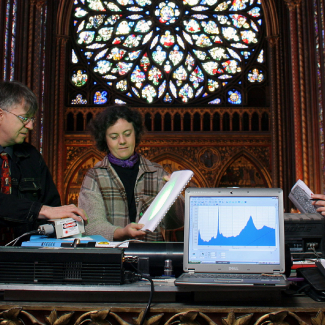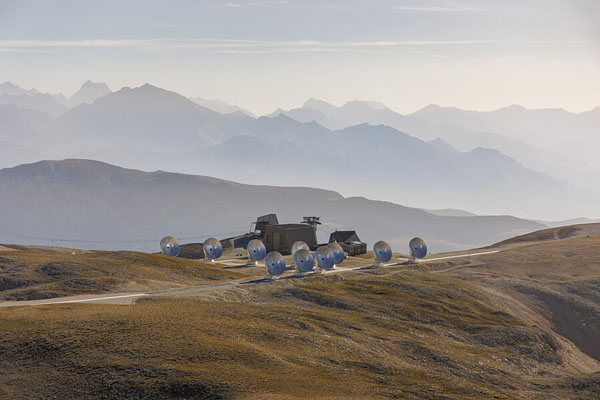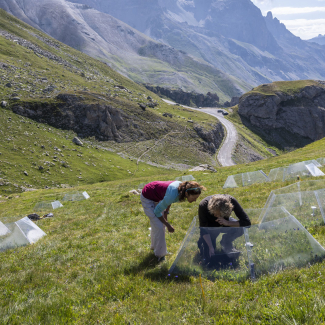
Partnerships
Bringing stakeholders together, founding partnerships, fostering the conditions for a long-lasting collaboration: these are the objectives through which the CNRS structures its approach to partnerships. These strong links with academia, industry and regional authorities enrich the work of the organisation and play a role in extending the influence of its research.
Multiple partnerships
The CNRS builds strong partnerships with academia and industry for the benefit of scientific innovation.
Public sector partnerships
The CNRS forms partnerships with both regional and national public institutions, such as universities and specialised higher education institutes, research organisations, government ministries and regional authorities. Academic partnerships take the form of shared research laboratories, and involvement in joint research projects or in site policies.
Partnerships with industry
Industries are essential partners for the CNRS. Support in creating a start-up, setting up joint public and private research structures, and patenting are just some of the concrete actions that help position the CNRS as a key stakeholder for innovation in France and on the global stage.
International partnerships
With a foothold on the international stage, the CNRS has played a role in a significant number of major discoveries alongside its foreign partners.
Through the CNRS's ’fellow-ambassadors' programme the organisation collaborates with illustrious personalities from the research sphere who place themselves at the service of the CNRS's reputation and of the scientific community.
Richly diverse teams
Mixing in our research units
The CNRS works within the ecosystem of higher education and research in France, which is notable for a high level of cooperation between various institutions. This is demonstrated in the fact that over 90 % of CNRS laboratories have “joint” supervisory authorities. Their human and financial resources are sourced from multiple institutions (CNRS, universities and specialised higher education institutes, other research organisations, etc.) to focus on a shared scientific project and/or infrastructure.
- 1100 laboratories across the whole of France
- 2/3 of CNRS staff are based across 11 major university sites that house half of our research and support units
- 80 laboratories outside France all around the world
Diversity of talents
Research staff and research support staff: the CNRS is notable for the great diversity of statuses and roles of members that make up its teams.
An ecosystem of regional partnerships
The CNRS plays a key unifying role across France and on the global stage in ensuring French research functions properly and in raising its profile.
Centres of excellence
These centres of excellence are major university sites with a global profile that combine higher education, research and innovation. By creating synergies, optimising resources, and through its national and global dimensions, the CNRS contributes to the visibility of these sites and to the promotion of French academic research throughout the world.
The Investments for the Future programme (PIA) and France 2030
This programme is managed by the General Secretariat for Investment (SGPI) and provides funds for investing in innovation. As the CNRS is established across the whole of France it plays an active role in the PIA: it is a partner in all Idex (Excellence Initiative) and I-sites (Initiatives in Science, Innovation, Regions, Economy) projects, as well as in most of the PIA and France 2030 projects that have a research or innovation component.
The role of a programme agency
Part of the CNRS's remit is to direct the 'Climate, Biodiversity and Sustainable Societies' research programming agency whose objective is to enhance the coordination of the work of research stakeholders and optimise the overall organisation of the research and innovation ecosystem in these fields.
Site policies
Together with its partners, the CNRS defines a shared scientific strategy and takes part in the construction and monitoring of structuring projects at the site level. The organisation contributes its national and global perspective on scientific topics, relationships with industry, the contribution of science to public policy or even on promoting a scientific culture.
International research infrastructure
International cooperation, in which the CNRS plays a frontline role, can support and build research infrastructure on a global level:
- Outstanding equipment: telescopes, particle accelerators in high energy physics, sources of neutrons and sychrotron radiation, lasers and powerful magnetic fields, intensive calculation systems, etc.
- Scientific resources: collections, archives or libraries.
- Virtual platforms: databases, IT systems and communication networks, etc.
These facilities located in France and throughout the world mean the French, European and global scientific communities have been able to make remarkable advances in countless fields.
Governance of research infrastructure
A very large-scale research infrastructure (IR) is a component of governmental strategy and most of them are also part of European strategy. Governance of IR at the CNRS is handled by a transversal body. A committee affiliated to the CNRS Scientific Office sets out the scientific strategy of this body in consultation with the Institutes and the French Ministry of Higher Education and Research.
Photo Credit: © Cyril Frésillon / Virgo / CNRS Images


